
7 drought-resistant climbing plants
Our tips for dressing your walls, pergolas, and trellises without watering!
Contents
Whether they cling with climbing roots, wrap around supports with their tendrils, or have long woody climbing stems that are trained by tying, climbing plants allow you to green a wall, hide from prying eyes, and shade a pergola. When drought comes into play, gardeners are sometimes at a loss regarding the choices to make. Among our many varieties of climbing plants, discover those that adapt best to a lack of water.
Banks' Rose
It is unthinkable to talk about gardens without mentioning roses, and it is unthinkable to discuss climbing roses for dry gardens without mentioning the Banks Rose! This is a very vigorous species, perfectly suited to create a soft ambiance on an arbour or to dress a pergola. Its delicate flowering bursts forth in spring with a multitude of small pompom roses. These are vigorous roses, highly resistant to diseases and hardy down to -10°C. They prefer a sunny position to flower abundantly and tolerate dry soils very well. Their growth is rapid—and can even be impressive—easily reaching over 10 m. They will need to be guided on a support. There are 3 varieties of this rose:
- Rosa banksiae ‘Lutea’: bright light yellow
- Rosa banksiae ‘Alba Plena’: a beautiful pure white
- Rosa banksiae ‘Rosea’: with lovely light pink pompoms
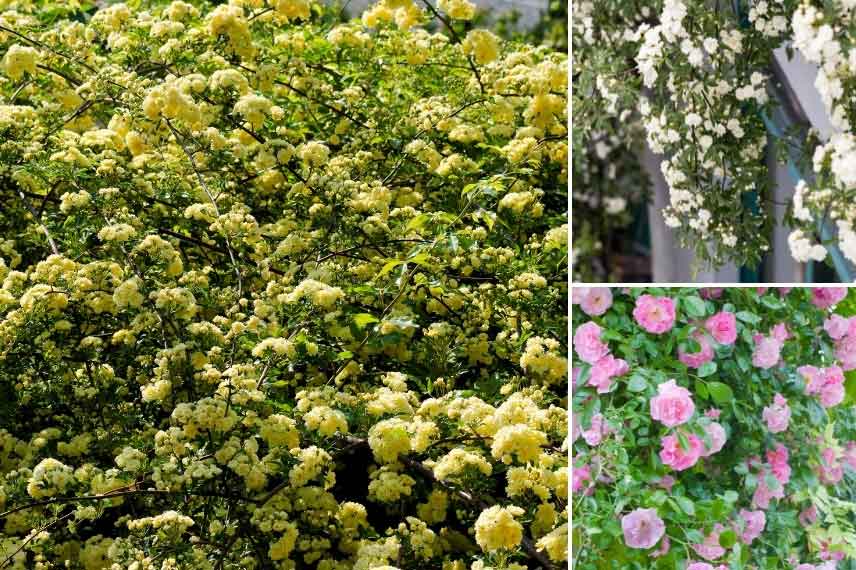
Rosa banksiae ‘Lutea’, Rosa banksiae ‘Alba Plena’ and Rosa banksiae ‘Rosea’
Campsis radicans
An impressive flowering from April to July, with a repeat flowering in September depending on the climate, rapid growth, tolerance to all types of soil as long as it is well-drained, and evergreen foliage: Campsis or Bignonia capreolata has everything to please! The flowers take the form of vibrant trumpet shapes, vermilion and yellow for the species Campsis capreolata, purple for the variety ‘Atrosanguinea’ and orange with a bright yellow centre for ‘Tangerine Beauty’. The bignonias with tendrils reach a height of about 8 m with a spread of 4 m. They tolerate dry soil and winter temperatures down to -10°C, but will need protection from intense cold while they establish.
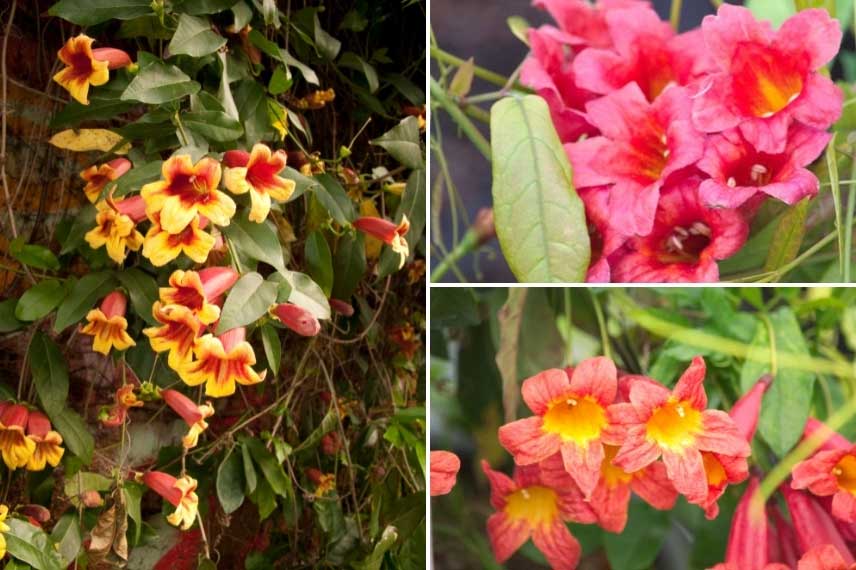
On the left: Campsis capreolata, top right the variety ‘Atrosanguinea’ and bottom right the variety ‘Tangerine Beauty’
Discover other Climbers
View all →Available in 0 sizes
Available in 0 sizes
Available in 0 sizes
Available in 0 sizes
Available in 0 sizes
Available in 0 sizes
Available in 1 sizes
Available in 1 sizes
Available in 1 sizes
Available in 1 sizes
Christmas Clematis
Clematis cirrhosa are surprising for their winter beauty. While the rest of the garden is at rest, they develop their voluble stems and foliage in winter. This is deciduous during the warm season when the plant enters a vegetative rest. They easily entwine in a trellis or in the branches of a bush up to 4m and bear an abundant flowering of bell-shaped flowers in December-January, sometimes as early as November depending on the varieties. These include:
- white marbled with pink more or less purplish for the varieties ‘Advent Bells’, ‘Balearica’, ‘Freckles’ and ‘Winter Parasol’
- pure white for ‘Jingle Bells’ and cream-white for ‘Christmas Surprise’
- purple for ‘Lansdowne Gem’
These clematis are easy to grow, hardy down to about -10°C, and thrive in dry, even poor and calcareous soil. They prefer a sunny or semi-shaded exposure.
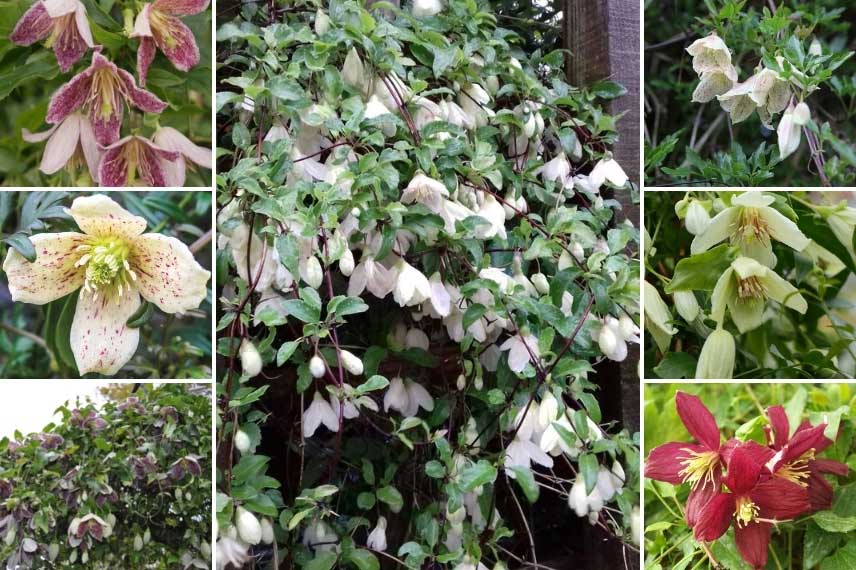
From left to right and top to bottom the varieties: ‘Advent Bells’, ‘Balearica’, ‘Freckles’, ‘Jingle Bells’ in the centre, ‘Winter Parasol’, ‘Christmas Surprise’ and ‘Lansdowne Gem’
Virginia creeper
Champion for dressing a wall to which it will cling by itself, the Virginia creeper can also adorn a pergola leaning against a wall, providing the expected shade in summer and allowing light to penetrate the house again by autumn. Before falling, the leaves take on magnificent autumn hues of reddish-orange. You will find different varieties in our collection of Virginia creepers, but the most common are Parthenocissus quinquefolia with its five leaflet leaves and Parthenocissus tricuspidata ‘Veitchii’ with its larger trilobed leaves and greenish-white flowers in June-July. They can climb up to ten metres, are hardy down to -15°C, prefer soft and fairly deep soils, and can be planted in either sun or shade. Their drought resistance is undeniable.
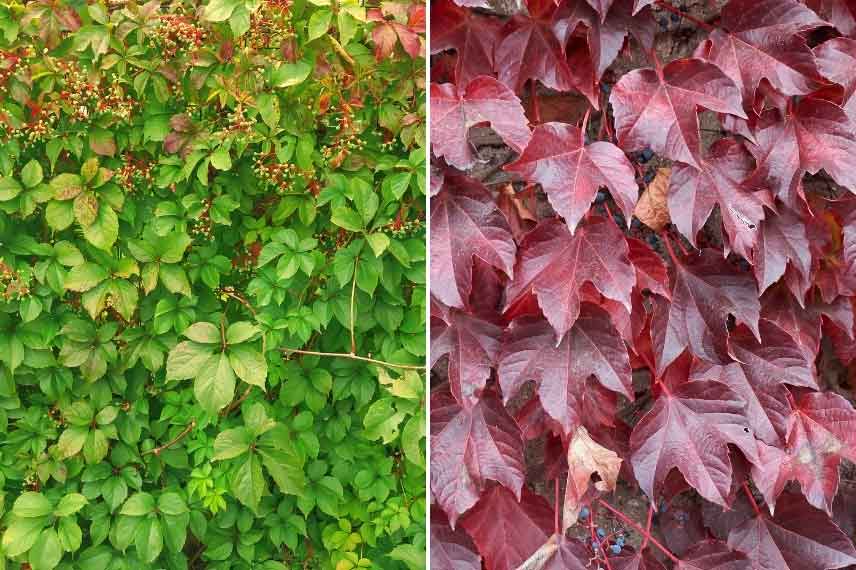 Parthenocissus quinquefolia and autumn foliage of Parthenocissus tricuspidata ‘Veitchii’
Parthenocissus quinquefolia and autumn foliage of Parthenocissus tricuspidata ‘Veitchii’
The False Jasmine
Also known as Chinese Jasmine, from which it originates, Trachelospermum belongs to a genus comprising around fifteen species. It is a voluble bush with evergreen, leathery, glossy green leaves. It blooms beautifully in summer, often in June-July, producing small, delightfully fragrant whorls. Their sweet scent is reminiscent of jasmine, hence the common name given to the plant. The flowers of Trachelospermum jasminoides are pure white against a backdrop of dark green foliage, while the leaves of the variety ‘Sun Lover’ are marginate with yellow and cream, and those of the variety ‘Variegatum’ are variegated with light green and cream. Known for being more cold-resistant, Trachelospermum asiaticum produces smaller yellow flowers, pinkish for Trachelospermum asiaticum ‘Pink Showers’, and multicoloured leaves variegated with green, cream, and bronze, along with yellow flowering for Trachelospermum asiaticum ‘Ogon-Nishiki’. Their hardiness generally reaches -10°C. They can grow between 3 and 6 m depending on the variety, with a spread of about 3 m. They prefer well-drained soils and adapt very well to drought, provided that water stress is avoided during the first two years after planting. They are typically used to cover walls or trellises supported by a framework.
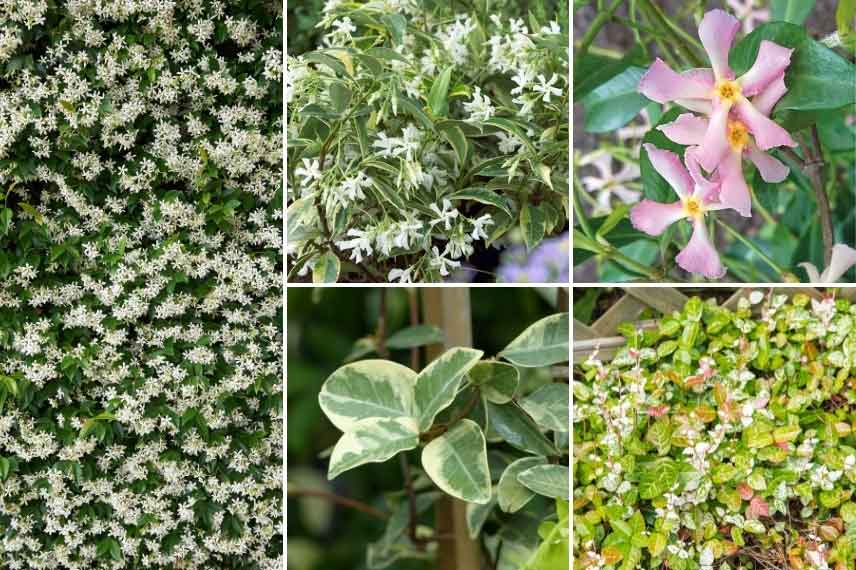
From left to right and top to bottom: Trachelospermum jasminoides, the varieties ‘Sun Lover’ and ‘Variegatum’, Trachelospermum asiaticum ‘Pink Showers’ and Trachelospermum asiaticum ‘Ogon-Nishiki’
Chinese Wisteria
Wisterias are not specifically plants of the South, but it must be acknowledged that they adapt very well to drought, and it would be a shame not to take advantage of their many qualities. Powerful voluble lianas, they can grow up to ten metres, and their spring flowering, sometimes repeat flowering more discreetly in summer, is a spectacle in itself! Everyone knows the splendour of their light purple clusters. The deciduous foliage is soft green, and the flexible shoots are easy to train, as the wisteria does not cling to its support on its own. It can form a strong trunk that wraps around the support it climbs… always in a counter-clockwise direction, unlike the Japanese Wisteria! Wisteria sinensis and Wisteria sinensis ‘Alba’ – a variety with pure white flowers – are hardy down to -15°C, prefer full sun or partial shade, and can even tolerate dry soils, provided they are given a little help with watering during the summer months in the first few years until they can root deeply.
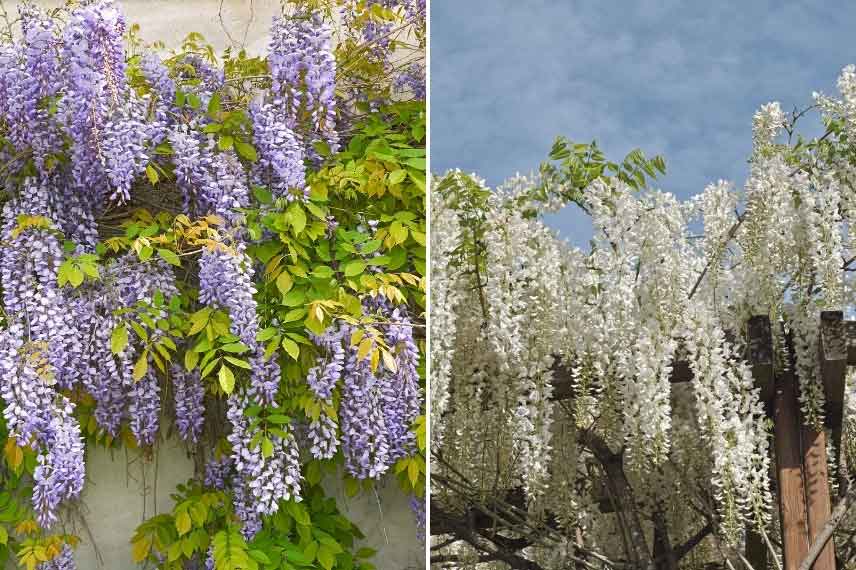
Wisteria sinensis and Wisteria sinensis ‘Alba’
Bougainvillea
It is impossible to talk about climbing plants for dry conditions without mentioning the Bougainvillea. Only regions sheltered from winter frosts see magnificent specimens thrive against a wall or pergola, flowering continuously from May to September-October. The most frost-resistant variety is Bougainvillea ‘Violet de Mèze’, as it can withstand temperatures down to -5°C in well-draining soil. Pot cultivation is also quite feasible, but in these conditions, regular watering must be maintained since the root system will not develop as it would in open ground, where it can withstand drought perfectly. The flowers are a beautiful bright fuchsia pink, and the foliage is semi-evergreen, depending on the growing conditions. Its sarmentous stems can be trained on a support up to 5m in full sun, but care should be taken with the thorns!
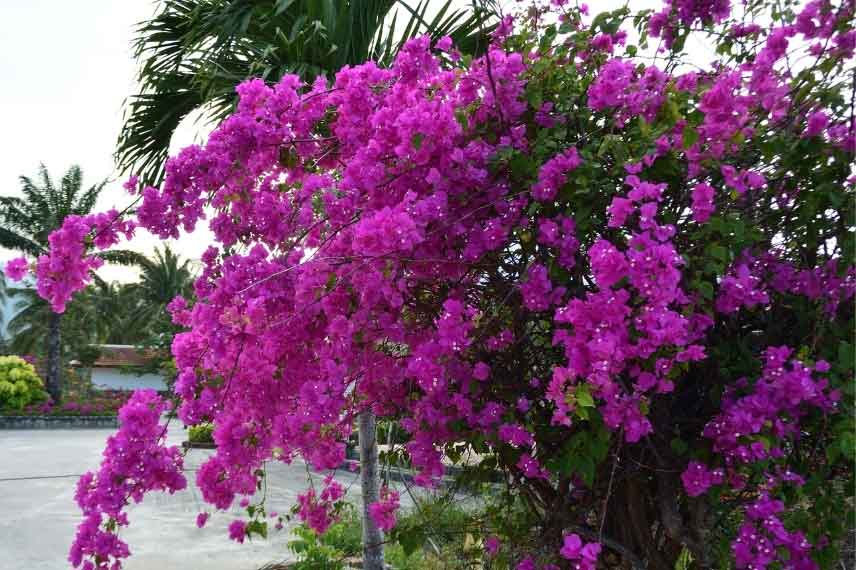
Bougainvillea ‘Violet de Mèze’
- Subscribe!
- Contents
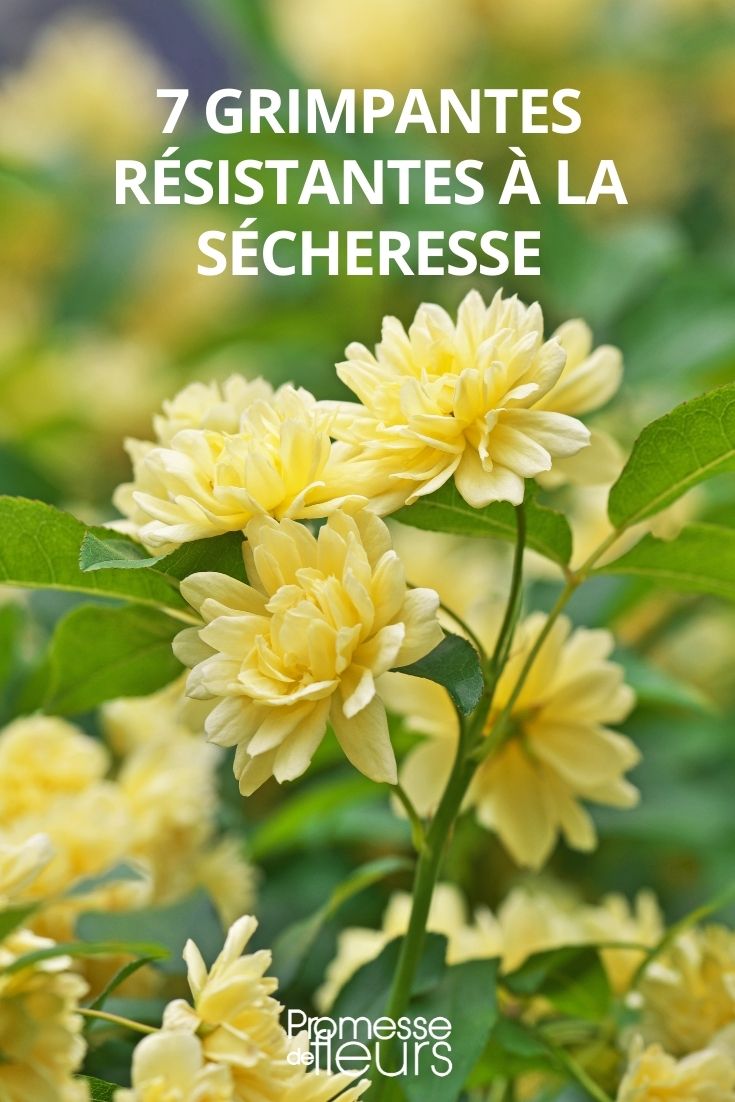































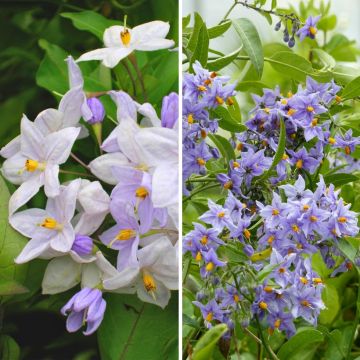
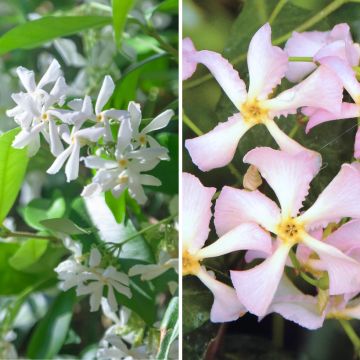
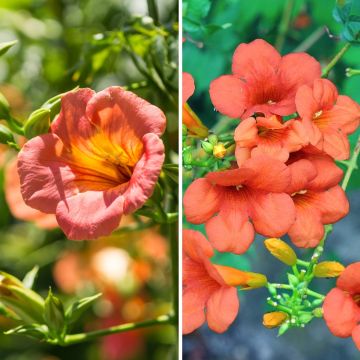
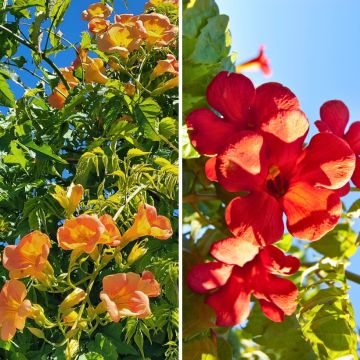
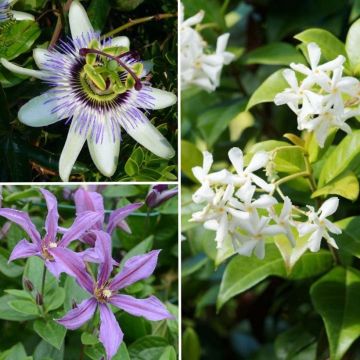
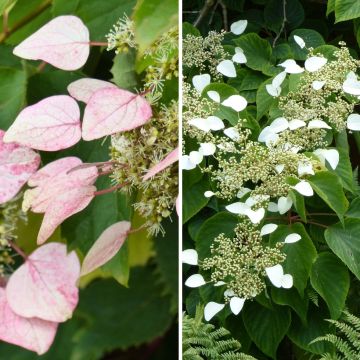
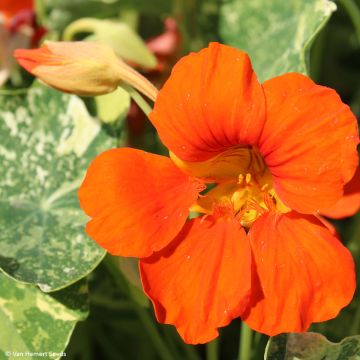
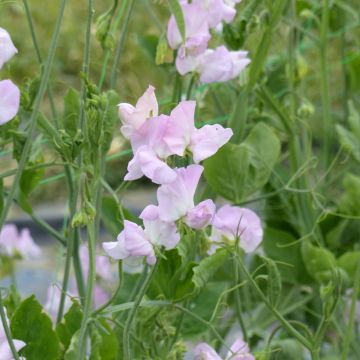
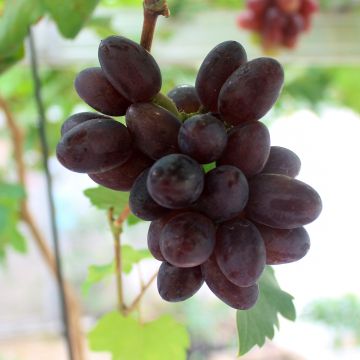
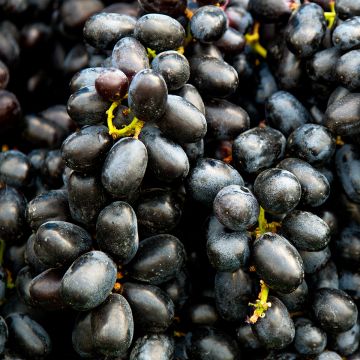
Comments